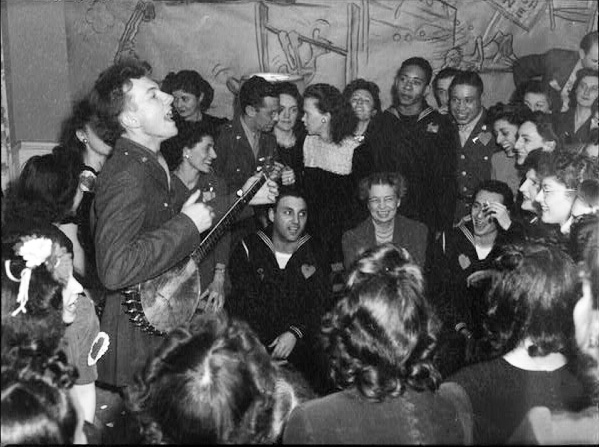|
Toiduklubi
''Toiduklubi'' (The Food Club) is the second Dagö Dagö is a folk rock band from Tallinn, Estonia. Dagö was formed in 1998 by Lauri Saatpalu, Peeter Rebane and Tiit Kikas. Dagö is the old name of Hiiumaa, an Estonian island. The band's first album, ''Dagö'', was released in 2000, and receiv ... album, released in 2002. Track listing # Presentatsioon (Presentation) # Toiduklubi (The Food Club) # Päris taga lõpus (Far At The End) # Üks hetk päevast jäi puudu (One Moment Was Want Of The Day) # Jää (Ice) # Kalamaja moonid ( Kalamaja Poppies) # Hobiaedniku laul (The Suburb Hobby Gardener's Song) # Tartu tenniseklubi (In A Tartu Tennis Club) # Noorte inimeste laul (The Young People's Song) # Püüa pilvi, sa ulatud nendeni (Catch The Clouds - You Can Reach Them) # Pulmad (The Wedding) ReferencesDagö's Official Website {{Authority control 2002 albums Dagö albums ... [...More Info...] [...Related Items...] OR: [Wikipedia] [Google] [Baidu] |
Dagö
Dagö is a folk rock band from Tallinn, Estonia. Dagö was formed in 1998 by Lauri Saatpalu, Peeter Rebane and Tiit Kikas. Dagö is the old name of Hiiumaa, an Estonian island. The band's first album, ''Dagö'', was released in 2000, and received the Folk/Ethno Album Of The Year award in Estonia. Toomas Rull (drums) and Raul Vaigla (bass) joined the band soon after. In 2001, Dagö won first prize in the ''Midsummer Night’s Improvisational Festival'' in Pärnu. Tiit Kikas left the group in 2002, and producer and musician Kristo Kotkas became the “invisible member” of the band. The second album, ''Toiduklubi (Food Club)'', was released in the same year, and Taavi Kerikmäe, a keyboard player, joined the band soon after. Their third album, ''Hiired Tuules (Mice in the Wind)'', was released in 2003, and in the same year drummer Petteri Hasa also joined the band. The fourth album, ''Joonistatud mees (The Picture Perfect Man)'', was released in 2006. Also in 2006, the band were a ... [...More Info...] [...Related Items...] OR: [Wikipedia] [Google] [Baidu] |
Dagö (album)
''Dagö'' is the first album by the Estonia Estonia, formally the Republic of Estonia, is a country by the Baltic Sea in Northern Europe. It is bordered to the north by the Gulf of Finland across from Finland, to the west by the sea across from Sweden, to the south by Latvia, and t ...n band Dagö, released in 2000. Track listing #"Šveits" – 4:02 #"Armastuslaul" – 3:10 #"24.02.00" – 3:41 #"Moedem" – 3:26 #"Hei tuul" – 4:05 #"Härra Sannikov" – 3:51 #"Kuula, kuula" – 4:30 #"Mõnikord ei vea" – 3:57 #"Mööda" – 4:03 #"Hallid päevad" – 3:38 #"Tuuletallajad" – 3:47 #"Cindy" – 4:06 #"Aeg on maas" – 2:37 #"Väikene mees" – 3:09 References Dagö, 2000 Dagö albums Estonian-language albums 2000 debut albums {{2000s-folk-rock-album-stub ... [...More Info...] [...Related Items...] OR: [Wikipedia] [Google] [Baidu] |
Hiired Tuules (album)
''Hiired Tuules'' (The Mice In The Wind) is the third Dagö album, released in 2003. Track listing # Isaga draakonil (Riding A Dragon With Me And My Dad) # Teine Kadriorg (The Other Kadriorg Kadriorg ( Estonian for ''" Catherine's Valley"'') is a subdistrict in the district of Kesklinn ("Midtown"), Tallinn, the capital of Estonia. It has a population of 4,561 (). The subdistrict name derives from the Catherinethal, a Baroque palac ...) # Miisu (Kitty) # Silmalaud (Eyelids) # Öövalges (In The Silver Night) # Sinihabe (Bluebeard) # Vaadake paremat poolt (Look On The Bright Side) # Kabaree (The Cabaret) # Kaks takti ette (Star Search) # Ahmed # Hiired tuules (The Mice In The Wind) External links Dagö's Official website {{Authority control 2003 albums Dagö albums Estonian-language albums ... [...More Info...] [...Related Items...] OR: [Wikipedia] [Google] [Baidu] |
Folk Rock
Folk rock is a hybrid music genre that combines the elements of folk music, folk and rock music, rock music, which arose in the United States, Canada, and the United Kingdom in the mid-1960s. In the U.S., folk rock emerged from the American folk music revival, folk music revival. Performers such as Bob Dylan and the Byrds—several of whose members had earlier played in folk ensembles—attempted to blend the sounds of rock with their pre-existing folk repertoire, adopting the use of electric instrumentation and drums in a way previously discouraged in the U.S. folk community. The term "folk rock" was initially used in the U.S. Music journalism, music press in June 1965 to describe the Byrds' music. The commercial success of the Byrds' cover version of Dylan's "Mr. Tambourine Man" and their debut album Mr. Tambourine Man (album), of the same name, along with Dylan's own recordings with rock instrumentation—on the albums ''Bringing It All Back Home'' (1965), ''Highway 61 Revis ... [...More Info...] [...Related Items...] OR: [Wikipedia] [Google] [Baidu] |
Kalamaja
Kalamaja ( Estonian for ''Fish House''; german: Fischermay) is a subdistrict of the district of Põhja-Tallinn (Northern Tallinn) in Tallinn, the capital of Estonia. It is located just northwest of the historical town centre, on the coast of the Tallinn Bay. Kalamaja has a population of 9,820 (). Kalamaja is one of the best preserved wooden architecture areas in Tallinn and Estonia. The quiet neighbourhood has long been known for its colourful hodgepodge of old fashioned, working class houses. Throughout most of Tallinn's history Kalamaja served as the city's main fishing harbour. Starting from the 14th century the area was traditionally dominated by fishermen, fishmongers and boat wrights. A new era began in 1870, when Tallinn was connected to Saint Petersburg by railroad. The Tallinn railway station (Balti jaam), was built between Kalamaja and the city centre. Suddenly enormous factories started to sprout up in this part of town, and they brought with them an influx of thousan ... [...More Info...] [...Related Items...] OR: [Wikipedia] [Google] [Baidu] |
